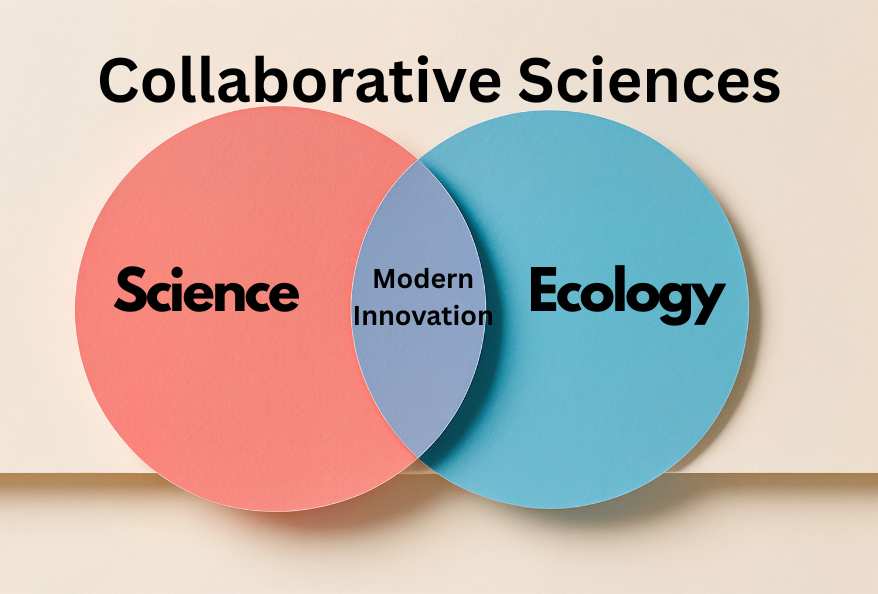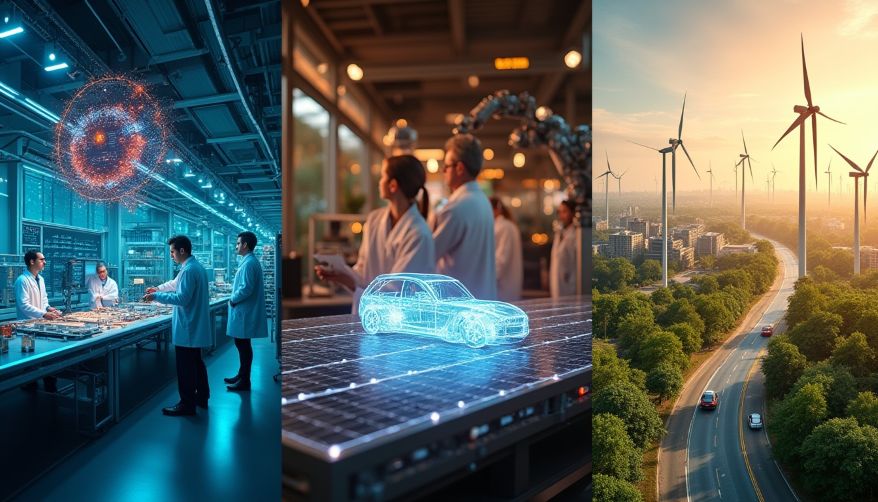Why Interdisciplinary Research Matters: Bridging Physics, Engineering, and Sustainability
Estimated reading time: 7 minutes
The most pressing challenges of our time include not only climate change, resource scarcity, but also environmental degradation. These cannot be solved by any single field of study. After all. they demand a convergence of minds. The path to a resilient future is paved not by solitary disciplines, but by the collaborative power of interdisciplinary research. By bridging the fundamental laws of physics with the practical applications of engineering, we can design solutions that are not only innovative but inherently sustainable. This fusion is transforming how we approach problems, moving from incremental improvements to radical, systems-level change. As we strive for a greener planet, it is this very synergy that will accelerate our progress, making sustainability the central pillar of technological advancement.
Discover how breaking down academic silos through interdisciplinary research is our most powerful tool for achieving global sustainability goals.
The Urgent Need for Collaborative Science in Sustainability?

The Limitation of Silos
Traditional research often operates within strict disciplinary boundaries. A physicist might deepen our understanding of material properties, while an engineer focuses on optimizing a product’s performance. However, when these fields work in isolation, a critical gap emerges: the design may be efficient, but is it sustainable? Without early and deep integration of environmental stewardship principles, even the most brilliant innovations can lead to unintended ecological consequences. This disconnect highlights the critical need for a new paradigm built on interdisciplinary research.
The Power of Integrated Knowledge
Interdisciplinary research actively merges methodologies, theories, and data from multiple fields to form a holistic approach. When a materials physicist understands the lifecycle analysis used by an environmental engineer, they can co-create a product that is high-performing and easily recyclable from the outset. This integrated approach, essential for green technology innovation, ensures that the goal of sustainability is woven into the fabric of the invention process, not added as an afterthought.
The Core Triad: Physics, Engineering, and Sustainability

This powerful triad forms the backbone of modern technological advancement aimed at sustainability.
Physics: The Foundation of Understanding
Physics provides the fundamental principles governing energy, matter, and forces. Research in quantum mechanics, thermodynamics, and photonics unveils new possibilities—like highly efficient perovskite solar cells or novel energy storage systems. This foundational knowledge is the first crucial step in the innovation chain, setting the stage for applied green technology innovation.
Engineering: The Bridge to Application
Engineering translates theoretical possibilities into tangible, functional systems. It takes the physicist’s novel solar cell and designs the manufacturing process, considers the scalability, and integrates it into a smart grid. This phase is where systems thinking application is critical, ensuring that the component works not just in a lab, but within the complex, interconnected systems of the real world.
Sustainability: The Guiding Principle
Sustainability is the essential compass that guides this entire process. It asks the critical questions:
- What is the environmental cost? Is this solution circular?
- Does it promote ecological balance?
By making sustainability a core objective from the beginning, interdisciplinary research ensures that the final product contributes positively to the planet, embodying true environmental stewardship.
“We cannot solve our problems with the same thinking we used when we created them.” — Often attributed to Albert Einstein.
Case Study: Photonic Crystals for Passive Cooling – A Triumph of Interdisciplinary Research
An innovative project aimed to reduce the massive energy footprint of air conditioning. Physicists designed a photonic crystal film that could reflect sunlight and radiate heat directly into space. Engineers then developed a scalable, roll-to-roll manufacturing process to produce this film cheaply and reliably. Specialists in sustainability conducted lifecycle assessments to ensure the manufacturing itself was low-impact. This is interdisciplinary research in action.
Interdisciplinary Research Case Study: The Result
The resulting product is a rooftop coating that can significantly lower building temperatures without any energy input. This innovation, a direct product of collaborative development, demonstrates a powerful systems thinking application. It doesn’t just make cooling more efficient; it redefines the system altogether, showcasing a profound commitment to environmental stewardship and a clear path for green technology innovation.
Cultivating the Interdisciplinary Mindset for a Sustainable Future

Fostering Collaboration
Promoting interdisciplinary research undoubtedly requires intentional effort. Universities are creating shared lab spaces as well as appointment programs. On the other hand, funding bodies are prioritizing grants that require teams from multiple disciplines. The goal is to break down institutional barriers and create ecosystems that nurture collaborative development from the ground up.
The Role of Systems Thinking Application
At the heart of this approach is basically systems thinking application. All in all, it is the ability to see interconnections and understand how a change in one part of the system affects the whole. An engineer with this mindset will design a battery not just for capacity, but for easy disassembly, promoting recycling and supporting a circular economy. This holistic view is especially essential for achieving true sustainability.
The Future is Integrated
The future of research is not just multidisciplinary; it is transdisciplinary, engaging not only scientists and engineers but also policymakers, social scientists, and communities. This expansive approach ensures that technological solutions are not only viable but also equitable and widely adopted, securing a lasting ecological balance.
“The best way to predict the future is to create it.” — Abraham Lincoln.
Interdisciplinary research is far more than an academic trend; it is an essential evolution in our problem-solving toolkit. By bridging the deep inquiry of physics with the pragmatic innovation of engineering, all under the guiding star of sustainability, we can tackle global challenges with unprecedented effectiveness. This collaborative spirit—fueled by green technology innovation, environmental stewardship, and systems thinking application—is our greatest hope for building a future that is not only technologically advanced but also just and sustainable for all.
Additionally, to stay updated with the latest developments in STEM research, visit ENTECH Online. Basically, this is our digital magazine for science, technology, engineering, and mathematics. Further, at ENTECH Online, you’ll find a wealth of information.
FAQs
Q1: What is interdisciplinary research?
A: This research brings together information, facts, methods, equipment, ideas, as well as beliefs from various fields. It helps us understand things better or fix problems that one field alone cannot handle.
Q2: Why is sustainability a driver for interdisciplinary work?
A: Sustainability challenges are complex and interconnected, involving environmental, economic, and also social dimensions. To solve these problems, we need to use what we know from science, engineering, social studies, as well as arts. This is a great way to encourage interdisciplinary research.
Q3: How does physics contribute to sustainable engineering?
A: Physics provides the fundamental principles (e.g., thermodynamics, photonics) that enable the discovery of new phenomena and materials, which engineers can then apply to create efficient, low-carbon technologies, driving green technology innovation.
Q4: What is an example of systems thinking in sustainability?
A: Designing an electric vehicle (engineering) while also planning for the recycling of its batteries (environmental science) and using grid energy from renewable sources (physics/engineering) is a systems thinking application that ensures a holistic sustainable solution.
Q5: How can institutions encourage interdisciplinary research?
A: Institutions can encourage interdisciplinary research by:
- firstly, making shared spaces,
- secondly, funding inter-departmental projects,
- also, building common school programs,
- give credit for teamwork when deciding on job security and raises.
This encourages people to work together and grow.
References
- Lang, D. J., Wiek, A., Bergmann, M., Stauffacher, M., Martens, P., Moll, P., … & Thomas, C. J. (2012). Transdisciplinary research in sustainability science: practice, principles, and challenges. Sustainability science, 7(1), 25-43. https://doi.org/10.1007/s11625-011-0149-x
- National Academy of Sciences. (2005). Facilitating Interdisciplinary Research. National Academies Press. https://doi.org/10.17226/11153
